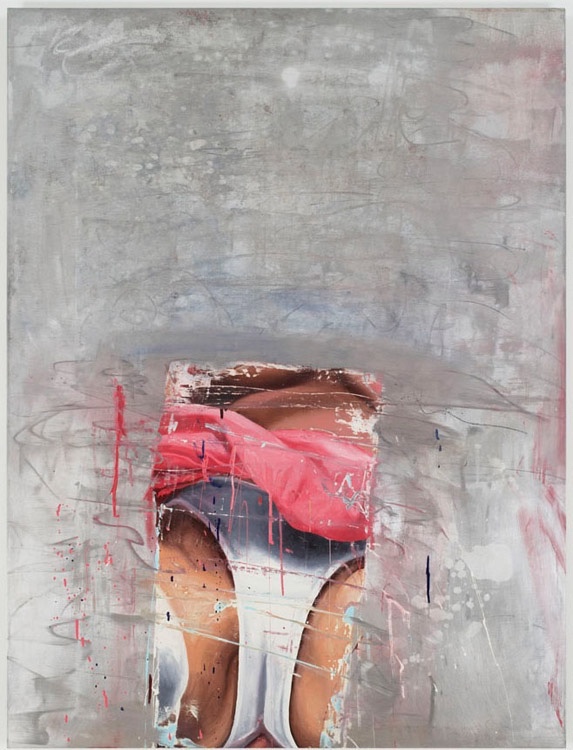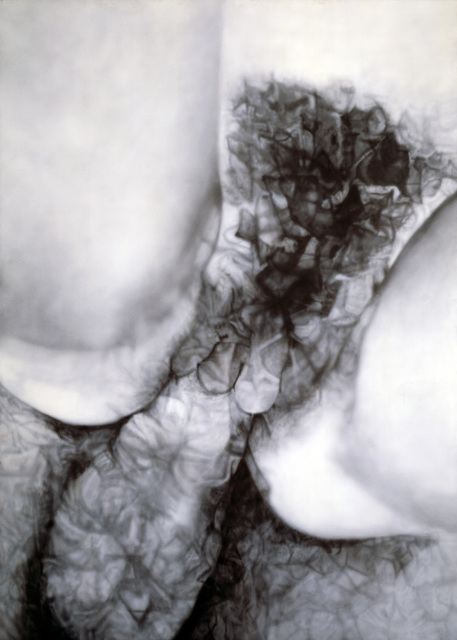
This year’s London Frieze art festival included an exhibit called Sex Work, a retrospective on the first wave of feminist art. “Your Art (Probably) Sux!” cried sex workers, upon realizing that the only one of us formally involved was an anonymous porn actress’ cropped pussy lips in a photo.
But to be fair, we hadn’t even seen much of the show. So how have we gotten to this cynical place, where giving an artist the benefit of the doubt seems like a losing bet? Because when it comes to conversations about sociosexual mores, the deck is stacked against us and the house always wins. Sex workers have long been used as muses, metaphors, and props, sensually strewn throughout the art world’s most famous boudoirs but rarely recognized as cultural producers in their own right. When it comes to the era of radical feminism at the heart of Sex Work, a period of artistic fascination with (fetishization of?) prostitution, a time integral in the creation of a violent anti-prostitution feminist politic, the stakes seem life or death. Fool me once, you know?
For the record, I don’t think the art in Sex Work sux. Considering the recent death of Hugh Hefner, a misogynist whose myopic hetero vision of men, women, and sex shaped a generation, it is still somehow precious to see bodies represented through the eyes of anyone but straight cis men. Betty Tompkins’ black and white “Fuck Paintings” feel spectral, like catching a glimpse of her hazy vulvas through a steamy window. They were all too real, though, in 1973 when she had to order pornography from “the far east” to a secret mailbox in Canada, and then smuggle it across the American border. Marilyn Minter’s color-saturated orifices aren’t nearly as shocking as the idea that only a few years before I was born she was told by a gallery that women artists don’t sell and to come back in ten years—or never.
The historical context of these works can’t be overlooked. They herald from a time that is eerily recent, when an exhibit featuring only women artists like this one would be so transgressive a curator might lose a career over it, and where the best an artist could hope for in terms of positive reviews was a patronizing remark about a work’s alterity—its “feminine qualities. “I like this art and yet I still struggle to release the distrust lingering from a many-decades-long betrayal committed by the epoch in question. Because after all, there is a historical context for sex worker outrage, too.
[NSFW image after the cut]
Many artists at one time or another have paralleled their aesthetic experimentation in sexualized themes with an identity as a sexual laborer. For some, this was a political maneuver in an attempt to offer solidarity to the sex worker rights movement by destabilizing the category. For others, like Marina Abramovic in her 1976 “Role Exchange”, where she took the place of a career sex worker in an Amsterdam brothel window, it was an expression of frustration at the institutions of art they believed were exploitative—the way they also envisioned prostitution. Both comparisons left sex workers feeling distinctly unsupported.

As Julia Bryan-Wilson points out in her research on prostitution in art, artists who asserted their right to identify as “sex worker” failed to recognize the frivolity embedded in those sorts of statements. Sex work certainly isn’t a first choice for many who do it, and you can guarantee that the decision to make a living as an artist is by no means a last resort employment decision. Former sex worker Annie Sprinkle (an admittedly dubious figure in the sex work art world following some highly criticized statements on the subject) has noted that while her performance art may sometimes consist of exactly what what she did as a sex worker, art and sex work are very much separate, the former offering the potential for personal fulfillment in a way that the latter never could for her. Materially, the risks are very different too. An artist makes risqué paintings and might end up being an undesirable candidate for a gallery. A sex worker posts an image online and risks having children forcibly removed by the state. Artists do paid sex as “artistic performance” (some have); sex workers do “prostitution” and then do jail time.
Said Tompkins about her use of pornography, “The photos were why I made the paintings in the first place and what I’d been looking for—beautiful, edgy and an attention-grabber.” If only she could testify along the same lines in the court hearings of sex workers who are arrested for their performances: “Officer, this is edgy stuff here!” Luckily, smuggling adult magazines over multiple borders is a thing of the past, a reality that makes Tompkins’ comments on sexual repression feel almost comically nostalgic when showcased in the context of today’s culture of epic porn availability.
But the limitations on sex workers remain as stringent as ever. It’s even possible that they’ve become much, much worse since Tompkins’ day. Sex workers are still forbidden from exposing genitalia in most advertising venues. To transgress this rule doesn’t result in being labeled “edgy” or “ahead of her time”—it results in a swift ban and the immediate loss of what few safe revenue streams are available. The proliferation of anti-trafficking hysteria has produced even more dangerous working conditions for sex workers who get swept up in the dragnet of increased surveillance and criminalization.
Curator Alison Gingeras produced a video syllabus on the heavy hitters of feminist sexual theory to accompany her exhibit. Andrea Dworkin and Sheila Jeffries share their virulent hatred of prostitution followed by a video from the incredible Margo St. James at the 1989 Whore Summit and one of Camille Paglia declaring her admiration for sex workers. I hope this organization is deliberately linear and positivistic because Sheila Jeffries needs to drown in the sands of time and we should pray to Margo St. James before every meal. I want more of her.
I want more sex worker artists who offer representations of their own sex and labor and affective experiences like Mona Superhero, Shnazzy (Instagram: @schnazzy), Kat Salas, Cinnamon Maxine, Tiny Clara, Adrienne Orpheus, and Tits and Sass’ own alum, Kat Snacks.
And I want feminist artists, who, when discussing how difficult it was to find porn in the 70s to make their art with, ask themselves if the models got a 30-minute lunch break and overtime pay. I want radical feminists of yesteryear to stop chuckling when they talk about Andrea Dworkin and start feeling at least the slightest flicker of shame for a culture of violence against sex workers they helped create. I want spaces for sex workers to say they hate their jobs. And they love their jobs. And they don’t really think about their jobs when they’re home for the day with their cats.
I want the unconsenting owners of the vaginas in these paintings to get rich off royalties.
For those who want to read “Dirty Commerce: Art Work and Sex Work in The 1970s” by Julia Bryan-Wilson online: http://arthistory.berkeley.edu/pdfs/faculty%20publications/Bryan-Wilson/jbwdirtycommerce.pdf